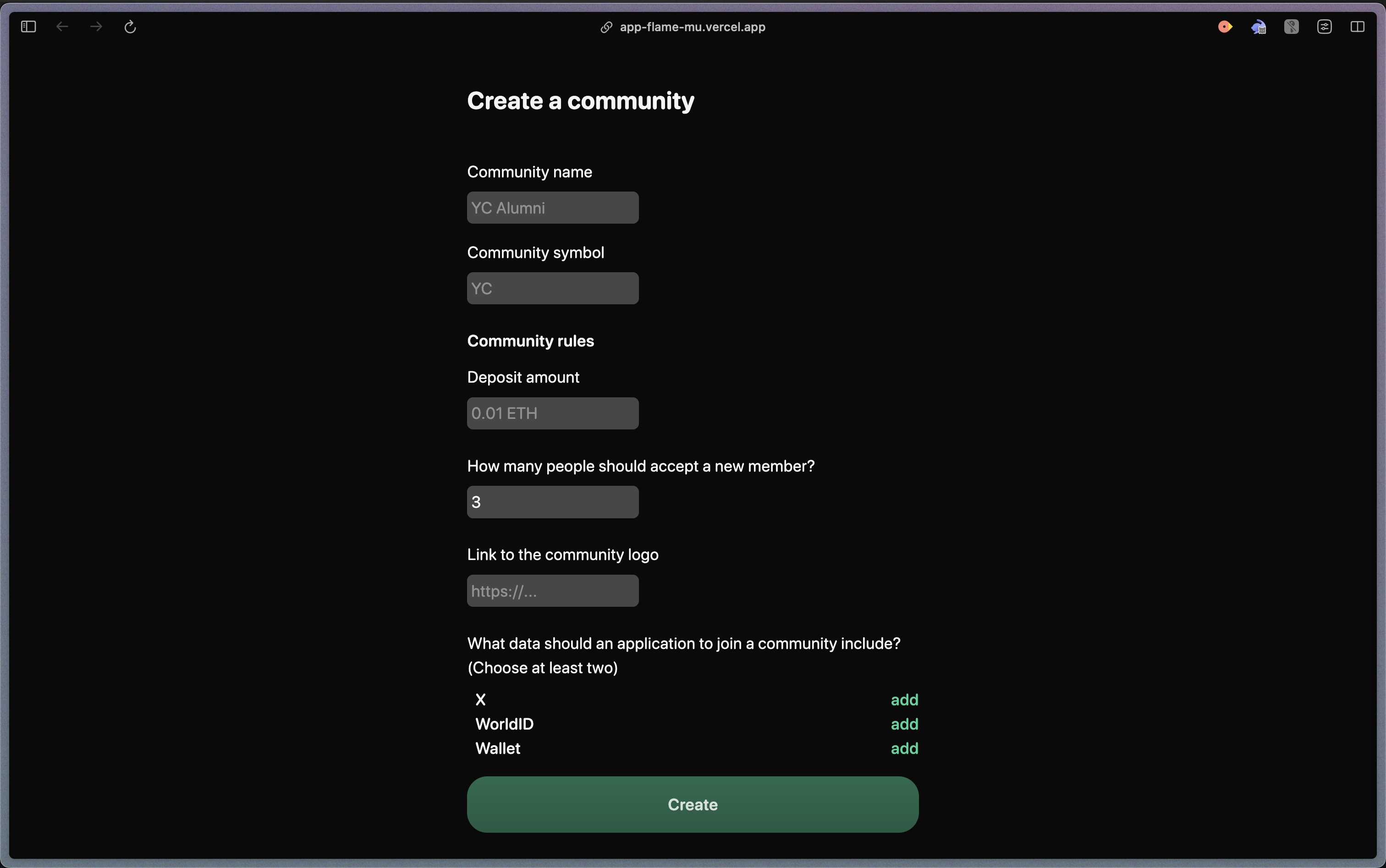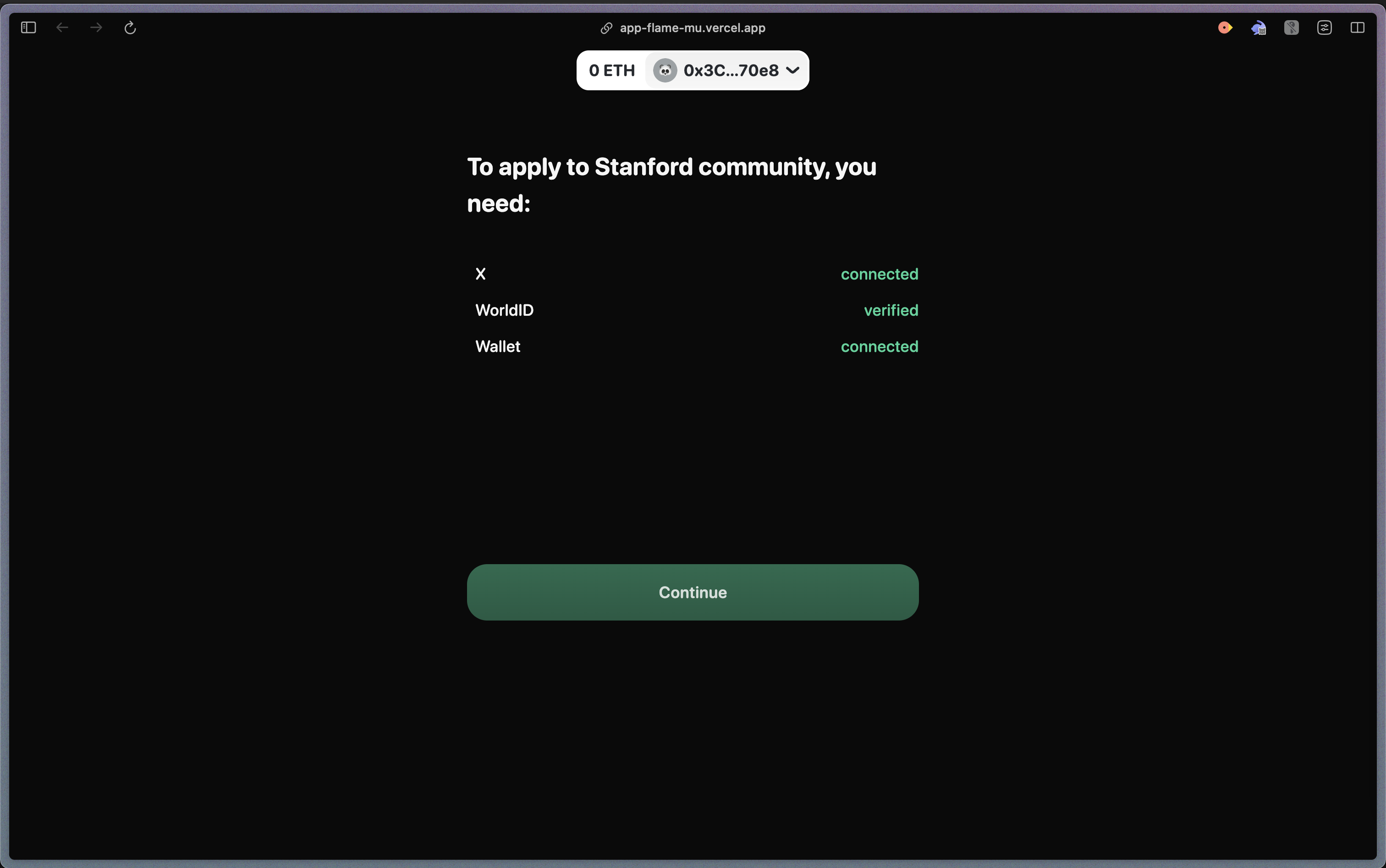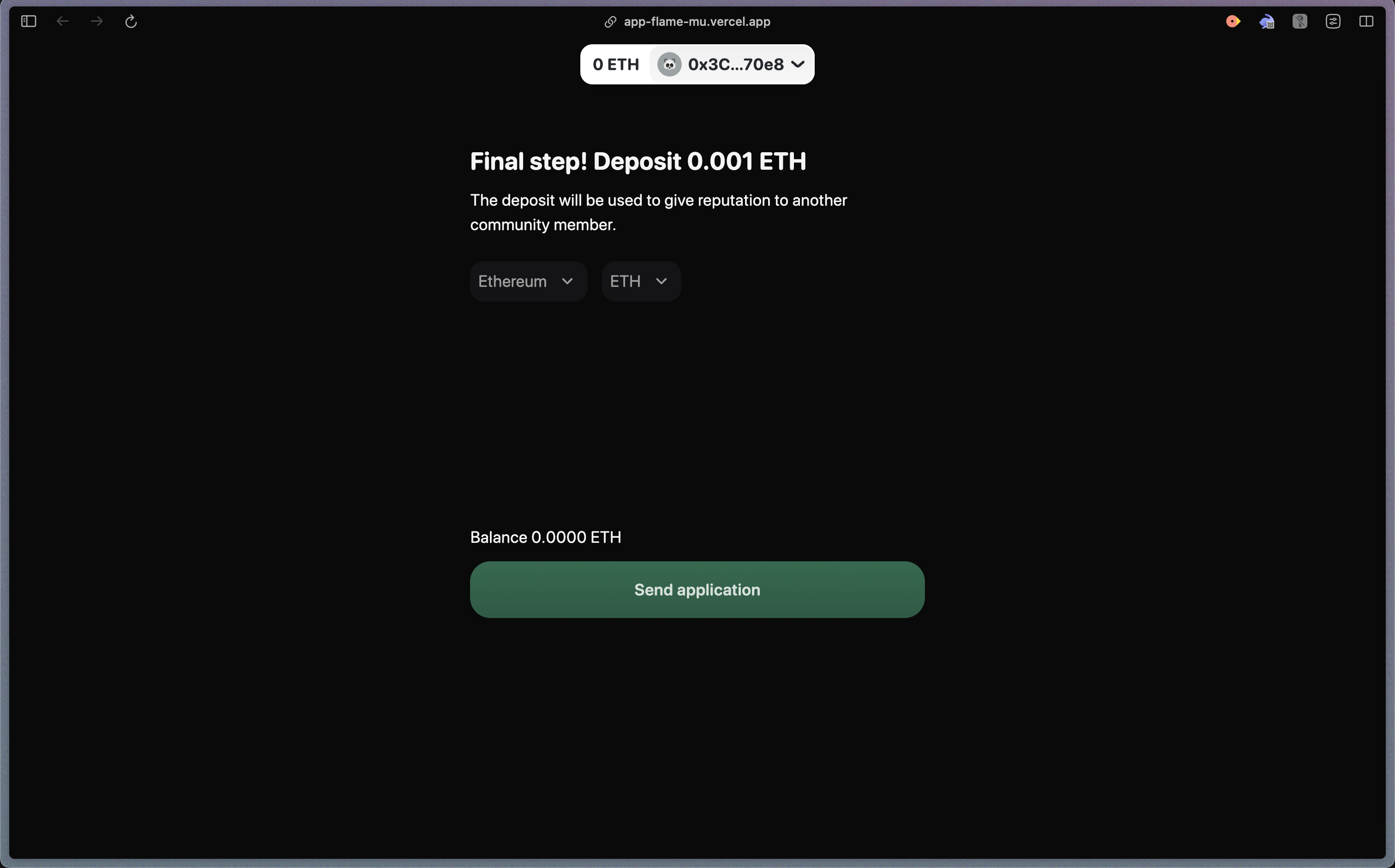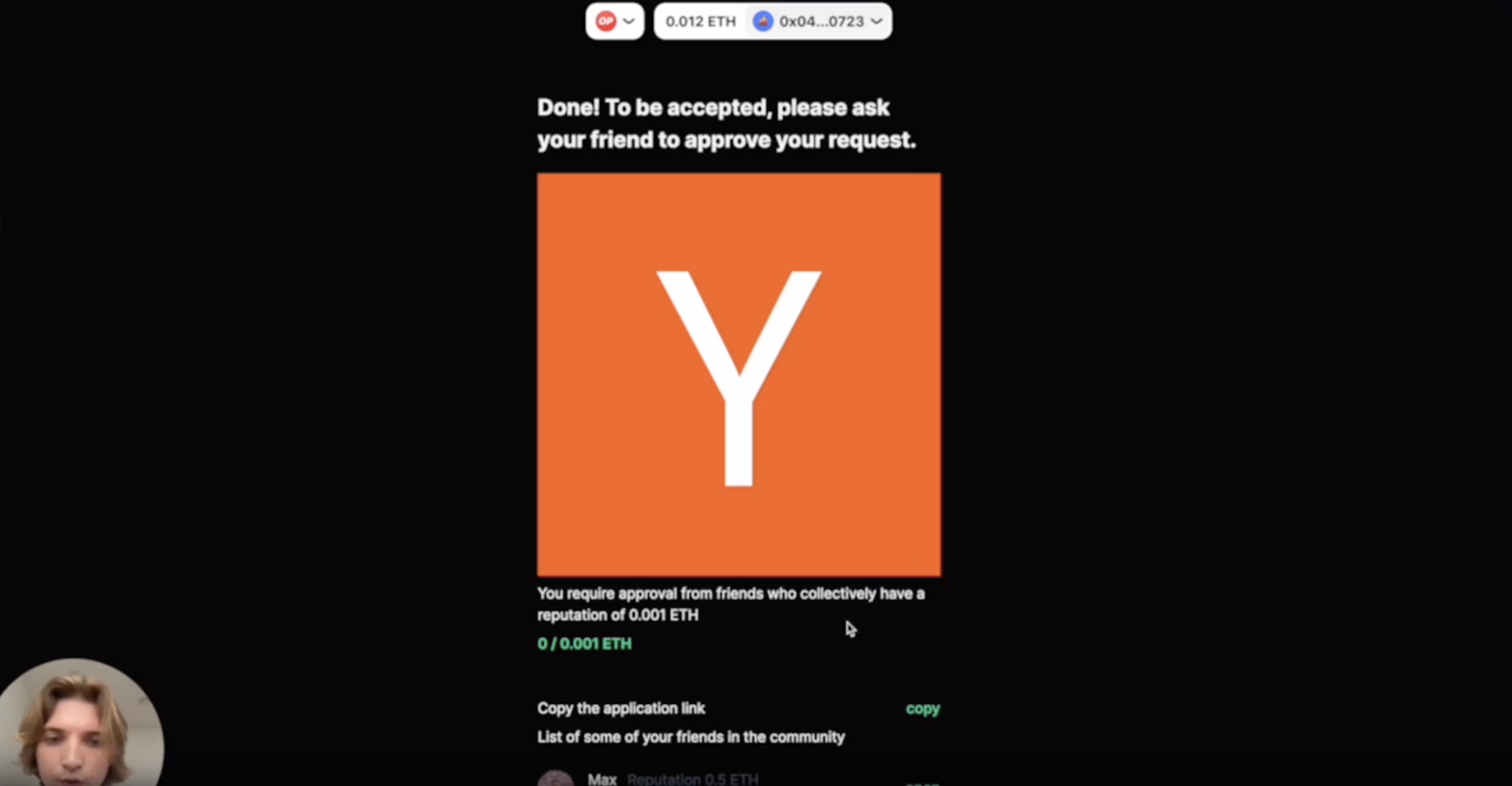Face protocol - community-based reputation.
Protocol for creating on-chain communities where members can give each other reputation and later utilize own reputation in DeFi protocols.
Face protocol - community-based reputation.
Created At
Winner of
🏊 Mode — Prize Pool

🆕 The Graph — 🥉 Best New Subgraph or Substream
Project Description
Thesis Reputation means nothing in DeFi. However, reputation backed by money means a lot.
Solution Community protocol, where community members give each other reputation in ETH as proof of trust and real-life acquaintance, enables them to utilize their own reputation in DeFi protocols as collateral or a loan guarantee for other community members.
How it works 0. Everyone can create their own community and specify its parameters, such as the deposit fee, the required number of members to accept new members, the community name, and logo.
- A community leverages a social graph for membership invites.
- Applicants submit a fee to request membership.
- Upon approval, new members receive "reputation boosts", each worth a fraction of the joining fee.
- Members can utilize these "boosts" to enhance the reputation of other members.
- Accumulated reputation can be utilized in DeFi protocols built on top of our protocol.
Examples of Use:
- Since reputation is directly tied to money, it enables them to participate in DeFi protocols.
- If these communities are adopted, they will be displayed on your profile in web3 social networks, similar to how your current company is shown on Twitter and LinkedIn.
- Verify status without revealing personal information. Anonymous founders can verify their education and past statuses at an address without disclosing personal details. (Note: The community determines the data required for verification when submitting an application. Some communities may require verification of platforms like LinkedIn, which may involve de-anonymization. However, users can decide whether to join such communities.) For instance, founder Blur could verify being an alumnus of Standard and YCombinator.
Here are some examples of protocols that could be built on top of our protocol:
- Lending (e.g., AAVE, Gearbox): Use reputation as collateral.
- Non-collateral lending with community guarantors: Use your friends' reputation as collateral.
- Portfolio management protocols with a security fund: Utilize reputation as a security fund to cover portfolio losses.
- Guarantee service for P2P trades: Hold reputation until the trade is completed.
- DAO voting without tokens: Vote using reputation.
- Derivatives based on reputation: Place bets on reputation growth or loss.
Sybil-resistant design
- Cannot be controlled by wealthy members Reputation is non-tradable; It can only be received from other members
- Cannot join with a fake identity Approvals require a personal acquaintance, but it is common in tight-knit communities
- Cannot be dominated by a small group Reputation can be revoked for bad behavior
- Protection against the use of multiple identities On-chain recording of the last update date and the number of updates ensures that a user cannot easily swap identities
How it's Made
The application is developed using React and Solidity smart contracts. We utilize TheGraph subgraph as an API and connect the wallet through the RainbowKit library. The app operates on Optimism, Base, Zora and Mode networks. Deployment is done via Vercel, and we designed the app in Figma. For verification option we use "Sigh in with World ID"





